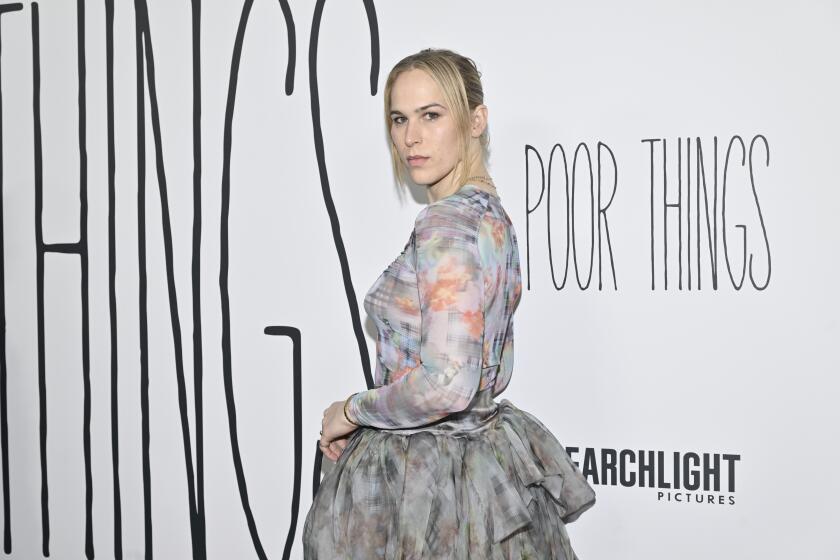Women’s Rights Group Slams TV Image of Teen Girls
A Washington women’s rights organization that regularly critiques the portrayal of women on national TV, slammed ABC’s “Mr. Belvedere” and NBC’s “The Hogan Family” in its latest report focusing on the television image of teen-age girls.
“The overarching theme on television programs is that your looks count a lot more than your brains do,” Sally Steenland, author of the study called “Growing Up in Prime Time,” said in a phone interview on Wednesday.
The 25-page report issued this week by the nonprofit National Commission on Working Women of Wider Opportunities for Women singled out episodes of “Mr. Belvedere” and “The Hogan Family” for furthering a distorted image of adolescent girls obsessed with shopping, grooming and dating and openly disdainful of studying and planning for a career.
“Growing Up in Prime Time” is the 10th report issued by the organization since it began its semi-annual critiques six years ago. In the past, the commission, which receives private, corporate and government funds, has looked at TV’s portrayal of older women, children within the family and professional women. This latest report, released Tuesday, is based on the monitoring of more than 200 episodes of 19 network television series that feature adolescent characters.
“One of the reasons we selected adolescence as a topic is the very clear fact that they (young women) face economic risk as they grow up,” said Steenland. “Many who watch these shows will be working but they’ll be poor when they are adults. It’s crucial they look at careers, the courses they need to succeed and the job market.”
Instead, according to Steenland, many sitcoms depict a “cumulative message that shopping and dating will lead to becoming a successful adult.”
According to the commission’s findings, intelligent teen-agers are generally cast as social misfits. TV teen female characters outnumber males, but are usually more passive than their male counterparts, and are middle class or wealthy 94% of the time.
In the real world, Steenland pointed out, more than one-third of America’s teen-age girls live in households with an annual income of less than $20,000.
“There was an episode on ‘Mr. Belvedere’ that was the worst that we saw,” said Steenland. “It was insulting to girls from beginning to end.”
The plot of the offending installment of the ABC sitcom featured a college fraternity’s “bowser ball” to which pledges were to invite the ugliest girls on campus.
“There was one line about how you’d go to the girl’s track team if you wanted a date for the dance,” said Steenland. “The joke was they have more hair on their legs than they do on their head.”
Throughout the “Mr. Belvedere” episode, the smart girl, Audrey, who was ultimately selected as the character Kevin’s “premier pooch” date, was portrayed as clumsy, ugly, unpopular and desperate for a date.
“At the end Audrey supposedly gets even by pointing out that Kevin is the dumbest in chemistry,” said Steenland. “But how does that make up for the central theme that this honorable young boy has this tough decision to make: Does he invite Audrey to the dog ball or not?”
Fox Television, which produces “Mr. Belvedere” had no comment on the report beyond pointing to a number of awards that the program has received for its sensitive portrayal of such topics as AIDS.
“There was an episode of ‘The Hogan Family’ we weren’t too thrilled with either,” said Steenland.
In it, the twin teen boys Mark and Willie under aunt Sandy Duncan’s care are assigned to a class project in which they are matched by computer with girl classmates in a “marriage.” Together, the junior-high age couples are supposed to plot out families, budgets, mortgages and careers.
One boy is matched with the smartest girl in class and the other, to a shallow “Valley girl.” The smart girl, Janice, wears her hair pulled back in a bun and must wear glasses. The “Valley girl,” Tracy, fluffs her hair, wears lip gloss and acts in a selfish, hedonistic manner.
“The boys have careers. One is an artist and the other is a heart surgeon. The girls’ roles are to be supportive of their husbands,” said Steenland. “In the end, the smart girl turns out to be a good wife who gives good advice and makes her husband a successful artist. The dumb girl fritters away the heart surgeon’s money on cruises and ruins him.”
The message, according to the report, is that girls should help their husbands in their careers.
“TV’s teen-age girls are portrayed as poised for professional careers and productive adulthoods without clues to the steps necessary to achieve those goals,” the report said.
Barbara Brogliatti, a spokeswoman for Lorimar, which produces the sitcom for NBC, countered that “The Hogan Family” is “one of the most respected shows on TV about working women and teen-agers. It has been lauded by family groups and children’s advocacy groups all the time and we’re very proud of it.”
The study did find some shows that featured well-liked, intelligent girls and teen-agers who linked their interests to career goals.
But most, Steenland maintained, portray adolescents as passive, pretty girls who “sit around on a couch reading a magazine and waiting for things to happen while the males all around them make things happen.”
The complete guide to home viewing
Get Screen Gab for everything about the TV shows and streaming movies everyone’s talking about.
You may occasionally receive promotional content from the Los Angeles Times.



